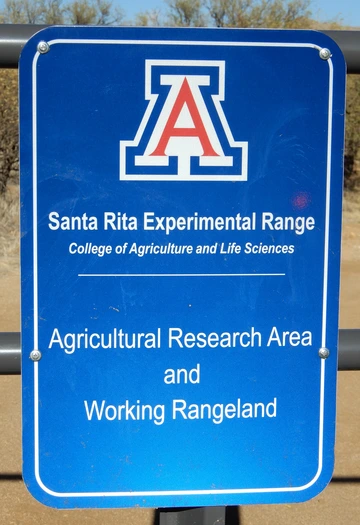
Founded in 1902 as the first experimental range to conduct research on problems associated with livestock production, the Santa Rita Experimental Range (SRER) has among its missions "to advance research and education on the ecology and management of desert rangelands through the secure, long-term access to research areas, state-of-the-art facilities, new discoveries, and research legacies".
Since its foundation, the SRER has been a principal site for pioneer range research with the purpose to build a sound body of scientific knowledge on the restoration, protection, and management of semiarid grasslands in the arid Southwest. Thanks to the long-term historical and biological databases that have been maintained since its creation, it is a world-class facility. The accumulated information on the ecology of the semidesert system at SRER is more complete than for any other tract of comparable size and diversity. Results of this research have direct applicability to over 20 million acres of semiarid rangelands in the United States and to another 20 million acres in northern Mexico. All DATA RESOURCES collected since the SRER foundation are also available to researchers and can be viewed and downloaded from this website. Scientists are encouraged to use the databases for their publication but are requested to acknowledge their use by following the Instructions for Use, Citations, and Acknowledgment provided on this website.
The SRER continues to function as an outdoor laboratory providing study areas to scientists for conducting research, leading classes, and delivering outreach. Interested persons can visit Research and Access Applications for more information about application procedures, insurance policies and rules, and lodging opportunities at the Florida Station.
A list of Publications from research performed at the SRER and a complete list of the most recent scientific papers are available on this website while most of the references listed in the Annotated Bibliography (1903 - 1988) can be found at the Campus Agricultural Center (part of the Arizona Experiment Station). Included in this library are copies of administrative reports dating back to the early 1900s.
In the early 1970s, the USD Agricultural Research Service Southwest Watershed Research Center established 8 instrumented watersheds that record rainfall, runoff, and sediment yield for each storm event. Those watersheds have been the site of several land use treatments and resulting publications. Data from the watersheds can be obtained at https://www.tucson.ars.ag.gov/dap/.
Beginning in 2012, the National Ecological Observatory Network (NEON) established a 30-year research program measuring atmospheric and ecosystem gas exchanges, invertebrates, reptiles, birds, mammals, and soil properties. The NEON program on the SRER is referred to as the Desert Southwest Domain Center, and all data collected is available to the public at https://www.neonscience.org/data-samples. The NEON data for the SRER are available on this website at NEON.

